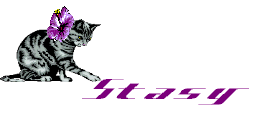


This column examines three releases from musicians who have been around a long time, and while many may consider them to be “old school,” their current tuneage shows distinctly modern sensibilities.

CLUSTER: Qua (CD on Nepenthe Music)
This release from 2009 offers 55 minutes of delightfully quirky electronic music.
Cluster is: Dieter Moebius and Hans-Joachim Roedelius.
On this album (the band’s first studio release in over a decade), Cluster ignores current EM mores which dictate epic long compositions, and instead delivers seventeen short pieces (while a few go as long as 4-7 minutes long, most clock in between 2 and 4 minutes in length) which exemplify the inventive predilections that have made them pioneers of electronic music for four decades.
Crystalline keyboards and quirky electronic effects abound in this tuneage. Loops may be established, but a plethora of embellishment is applied via additional threads, resulting in minimal music that exhibits a lush density.
Percussive elements are present, but the rhythms are often produced by clanging electronic pulses or environmental elements (like the crafty use of a squeaky door in one piece). Whatever the sound source, the tempos are lively and brittle.
One of Cluster’s signature traits is their use of novel sounds. Their electronic palette tends to be highly crisp, often with belltones that shimmer like a xylophone made of icicles. The use of wholly unearthly noises is a frequent vehicle which lends an eerie beauty to the music. Some of the sounds they use might even be considered to be ilbient in nature.
These compositions vary in definition. Some are toylike and melodic, while others explore a controlled chaos milieu to generate wobbly melodies of an elusive character. Unpredictability is an integral aspect. Frolicsome pieces are balanced by tracks that reverberate with heavy bottoms. No matter what approach is used, however, the results are thoroughly enjoyable.
This album is produced by ambient notable Tim Story.

MYTHOS: Gallery Concerts (CD on Mellow Jet Records)
This release from 2009 offers 53 minutes of bouncy electronic music recorded live at Grugapark in Essen, Germany, on August 29, 2008.
Mythos is Stephan Kaske. Returning to his roots, Kaske performed without laptop computers, just using flute, electronic bagpipes and an assortment of synthesizers, effects units and vocoders from the 1970s.
Needless to say, the electronics exhibit a retro sound, yet Kaske’s handling delivers a thoroughly modern flair to the bouncy melodies. Textural flows create lavish backdrops for the keyboard riffs and the blooping sidereal effects.
The keyboards are cheery and sprightly, generating nimble-fingered chords of sparkling definition. Additional keyboards lend deeper resonance to the mix, nicely fleshing out the music. Loops are sequenced and left to run while auxiliary riffs enter the flow with steadfast regularity. This multi-layered activity bestows the melodies with a vivacious sense of animation.
E-perc provides sinuously chittering rhythms which introduce a bouncy demeanor to the tuneage. These intricate tempos achieve an almost techno presence, enhanced by the presence of deep bass tones establishing complimentary rhythms.
Flutes are utilized to flavor one song with a lush idyllic attitude, while in another track bagpipes inject an impish lilt with their shrill, sliding chords. Synthesized trumpet gives the last song a dramatic brass presence.
Vocals are fed through vocoders, resulting in mechanized crooning that remains tastily submerged within the spry music.
These compositions are quite liquid. The fusion of antique equipment with Kaske’s well-seasoned talent produces tuneage that adroitly blends contemporary electronic music with techno sensibilities, an engaging mix of cerebral and danceable intentions.

ROBERT SCHROEDER: 30 Years After (CD on Spheric Music)
This release from 2009 offers 76 minutes of majestically accessible electronic music.
The album begins with a tender guitarsy track featuring a recitation in which Schroeder explains how he started making electronic music in 1979 and how things have changed in the thirty interim years. Excluding a few vocal snippets here and there, the rest of the music is instrumental.
Lavish electronics and synthetic rhythms conspire to generate celestial tuneage of mesmerizing beauty.
The electronics are slick and refined. While textural flows function as backdrops for lead electronic riffs, they are also employed to season the mix on equal footing to the lead cycles.
Keyboards provide engaging riffs that slide into play and flavor things with their bouncy presence. Traditional piano notes lurk within the mix, establishing a solemn undercurrent for the modern flair exhibited by the rest of the music. Sometimes the keys adopt a very crystalline quality that fits nicely with the music’s overall twilight luster.
Guitars periodically provide quasi-romantic chords.
Percussion is utilized, lending rhythms to the melodies. In some pieces the beats are languid, suiting the pacific temperament of the music. At other times, the tempos muster a degree of vitality but generally remain as gentle contributions instead of achieving any driving locomotion. Admittedly, a few tracks do achieve a dancefloor appeal with their chugging rhythms.
These compositions embody a soothing demeanor. The melodies possess a regal presence that is often flavored with hints of techno oomph. A certain relaxation is inherent in the pieces; even the energized passages retain a reserved cerebral character. A distinct richness of sound marks this music. Schroeder’s veteran ability to inject elements of pep into the dreaminess is bewitchingly satisfying.

| Entire page © 2010 Matt Howarth. All rights reserved. |
Webpage design by
 |